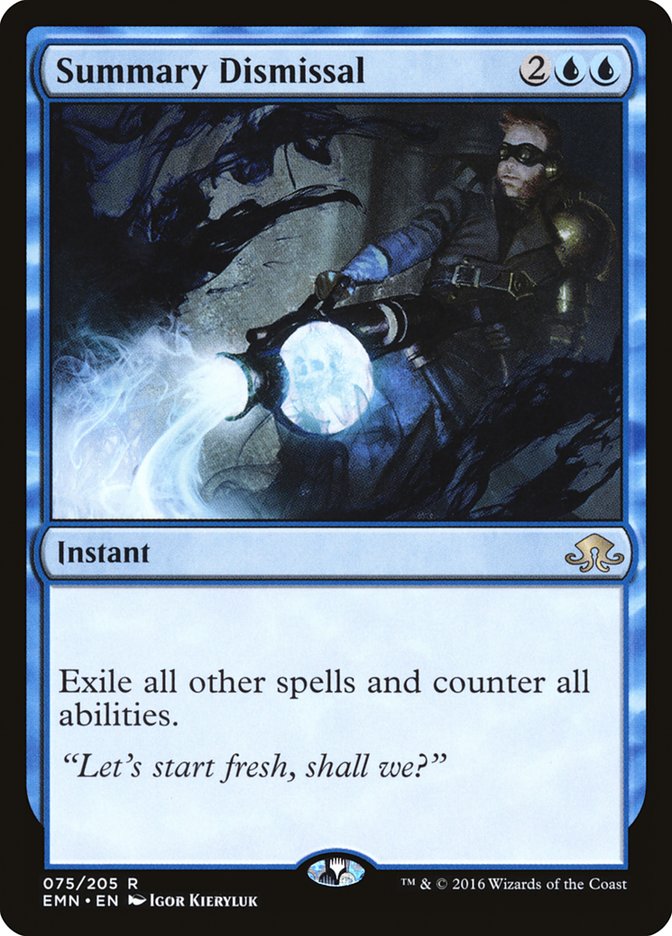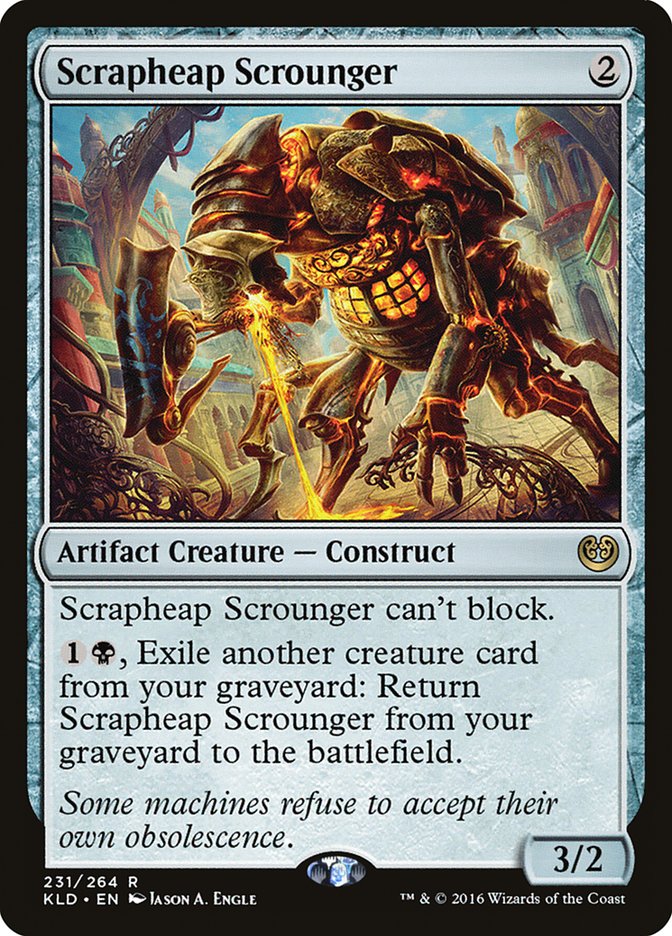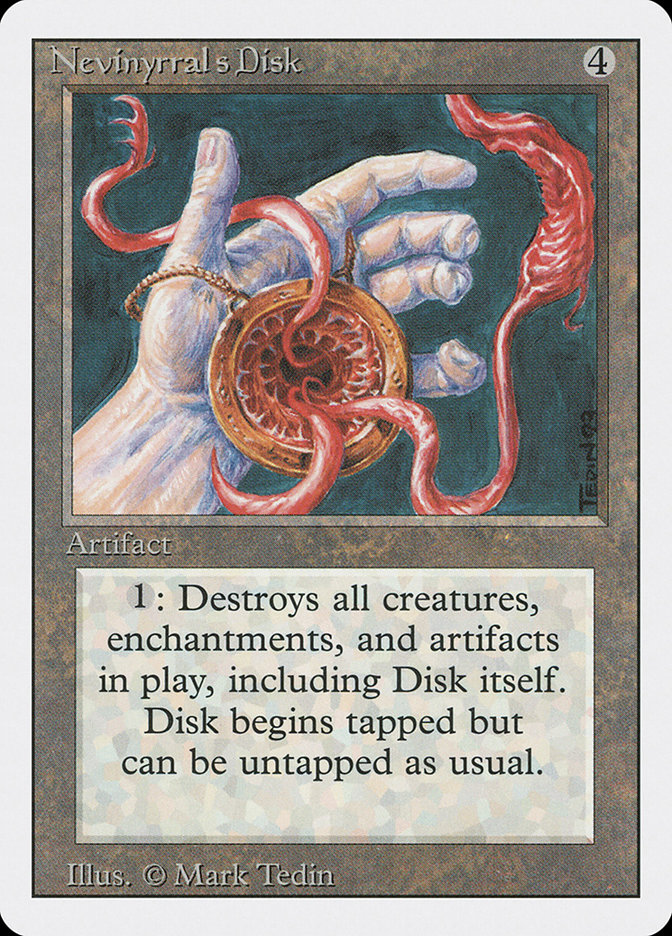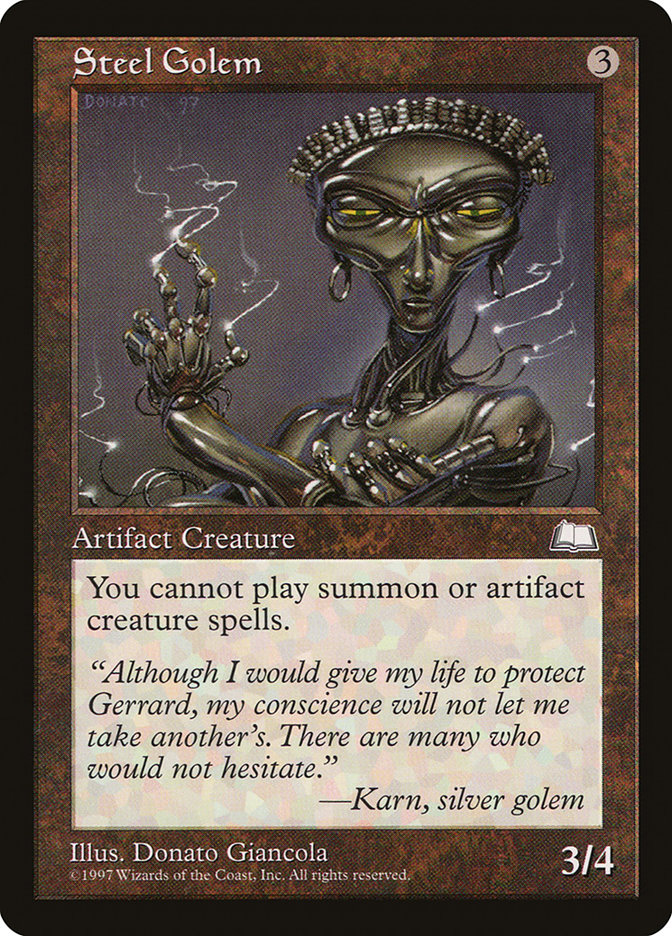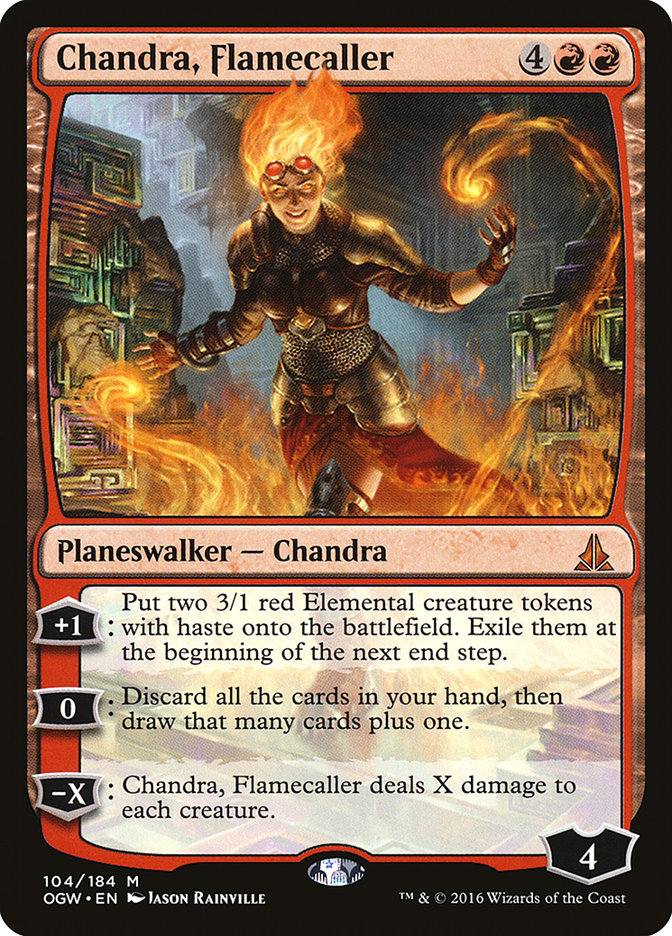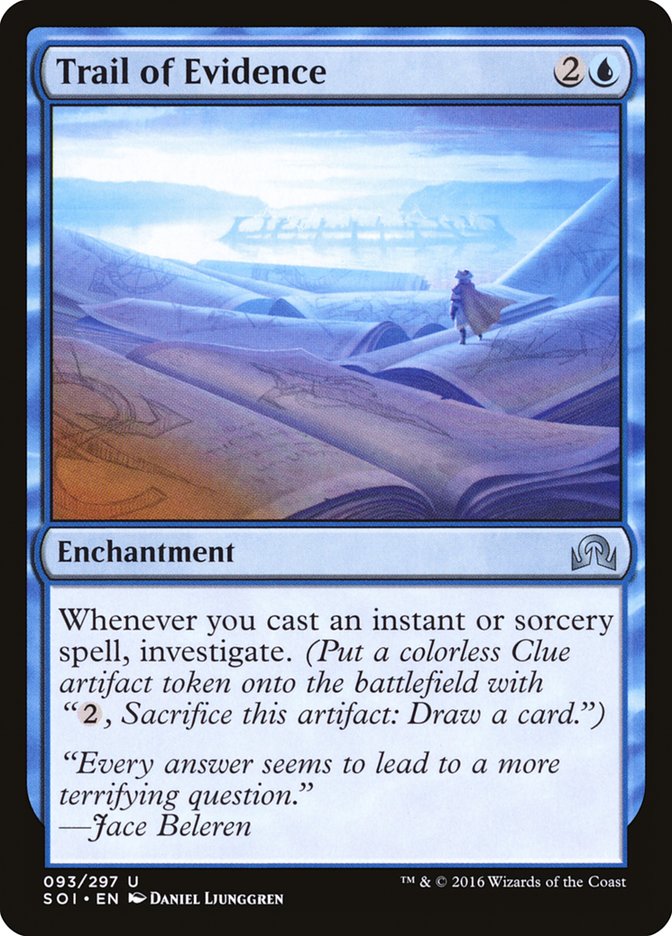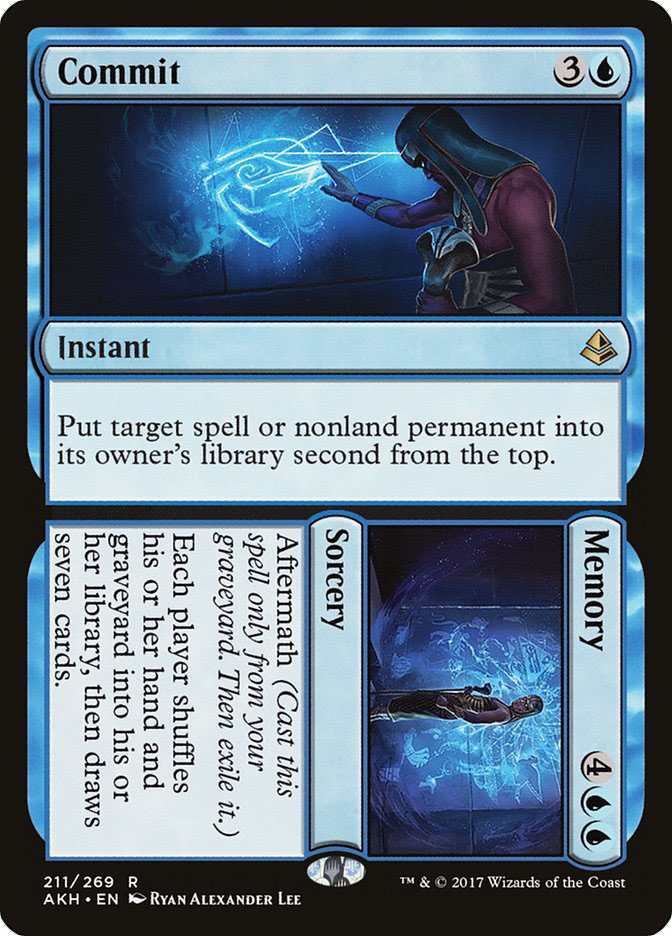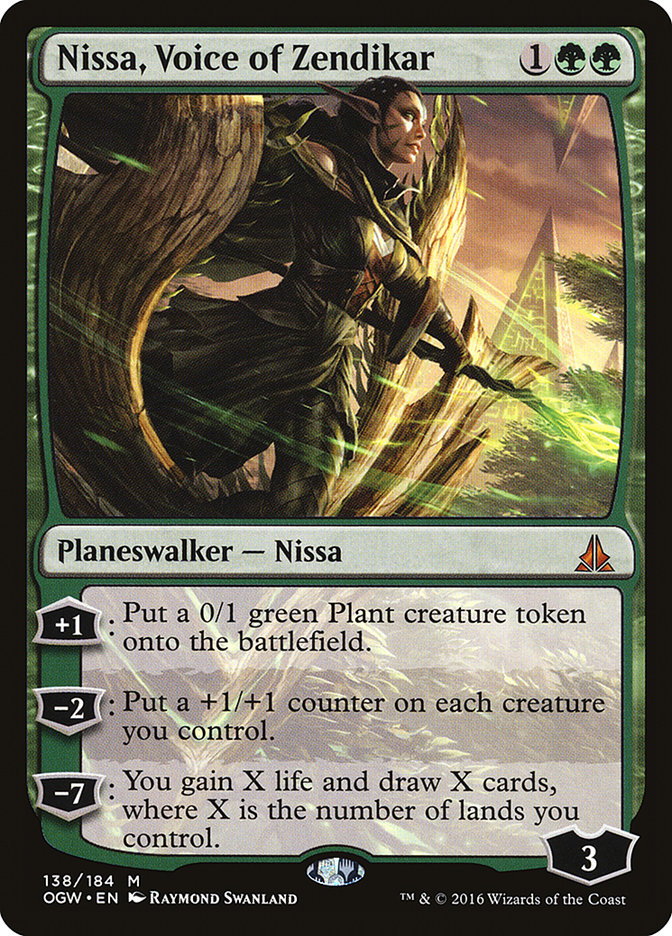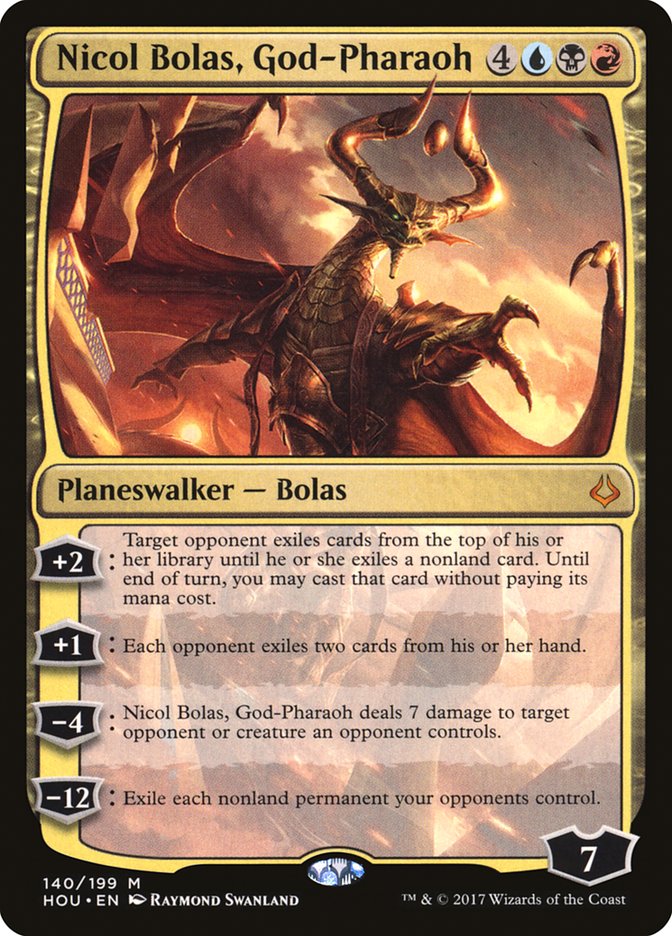They say close only counts in horseshoes and hand grenades, and from where I sit, that is mostly true.
The last two weekends were intense. First, I went to Disneyland for a freelance gig that had me taking pictures of Magic Johnson and Arnold Schwarzenegger. It sounds fun, but the work was truly exhausting. Then, days later, I took a long journey to Kansas City on the quest for a return to the Pro Tour. It would be the last chance I had to qualify for Pro Tour Ixalan. Unfortunately, I fell to Tyler Schroeder in the third game of the Top 8, my R/W Hyper-Aggro deck (in the Team MTGMintCard style) handily defeated after a double-mulligan and a canny three-for-one from Tyler. Ouch.
And so, I returned to a focus on two formats: Team Sealed in preparation for Grand Prix Cleveland and Standard because, well, I’m a glutton for punishment.
The real reason that I like Standard is that I absolutely love the place where U/R Control has been sitting lately. While debate raged in some quarters online about whether or not U/R Control or Marvel decks of various varieties had the upper hand, the real answer was it depended on how much each particular deck gave a damn about the other one. If Temur Marvel truly cared, it would generally beat U/R Control regardless of how much U/R Control cared. On the other hand, if only U/R Control cared, it would generally beat Marvel. The real issue that swayed it, in my opinion, was that Marvel often didn’t know how much it had to care to be in the “truly caring” camp, and so I found myself usually sitting pretty in the matchup.
Then, of course, Wizards went and banned Aetherworks Marvel.
While I know that many people are excited about this change (and I am one of them), it wasn’t a decision that was without cost for Wizards of the Coast; a great many players have been hit by the topsy turvy waves of the banning cycle and are frankly just tired of it. Personally, I’m not so concerned for a simple reason: the sets about to rotate out weren’t conceived of for a “Big Standard”, and moving forward, future sets will have enough time in their development schedule to be modeled properly for the larger card pool that Standard employs. In addition, Wizards has made announcements about growing their R&D team, so that also makes me hopeful.
If you’re one of the people frustrated, just take heart: stumbles have happened, but the game perseveres, and the ever-marching push onward and upward continues.
For me, already in love with a deck in Standard, I had to ask myself, “What does this change mean for U/R Control?”
There were plenty of other questions to be asked as well. For example, are new decks suddenly worth considering? Are old decks, like B/W Control, suddenly worth re-examining? But, first and foremost, I wanted to think about the deck I’d been playing the most.
The question about what it means for U/R Control is a contextual one. If there isn’t a worry about a turn 4 Ulamog, the Ceaseless Hunger, nor a worry about a turn 9 or 10 Ulamog, it starts to make certain cards feel a little less necessary in the sideboard.
In addition, though, it also means that the old rulers of the format are likely to re-emerge, at least until the dust settles. Hour of Devastation will shake things up even more, most certainly, but a quick look back in time reminds us that B/G Delirium and Mardu Vehicles decks were hard-hitters. Even if they don’t come back in force, it does mean we’re going to see more of an old friend:
In thinking about these implications, I found myself wondering what it was I’d want my base U/R build to do. Certainly, I wanted to go with a somewhat “classic” removal package in four Magma Spray and four Harnessed Lightning, but did I want to go further? One of the key cards from the past that I’d loved sprung to mind: Brutal Expulsion. While slightly clunky, I’d loved that the card could very powerfully blunt the most aggressive draws.
There were other moves that I found myself making as well. I already loved Censor, and where some people found themselves underwhelmed with it because they weren’t successfully countering much with it, I was finding myself loving the card because I felt like it was making the threat of that counter credible, and if my opponent slowed down, so much the better.
In addition, though, I made another leap based on another cycling card, Hieroglyphic Illumination. Trying it out early on, it made an impression. While this might sound like a bizarre comparison, it reminded me of Whispers of the Muse back in Tempest-era Standard, when the world was very different.
Spending six mana on a Whispers of the Muse to get buyback was the way that you’d get to your card advantage. It was slow and grueling, but it worked. However, in the early game, you were absolutely content to just “blow” a Whispers by only paying a single mana for it. More and more, I started realizing that I really liked Hieroglyphic Illumination as a Whispers of the Muse analog. The burying power of the rest of the U/R Control deck could accomplish the true grueling pain of the “buyback” element of Whispers of the Muse, but that early play felt like it mattered, making the prospect of running less land palatable.
Importantly, it solved another conundrum: Glimmer of Genius was both a not-great card versus aggressive decks (especially Mardu Vehicles) and a necessary card. It was not-great because oftentimes you simply didn’t have the time to take off to play a card like Glimmer of Genius, and at the same time, you needed to be able to push into more cards after the battlefield was stable, and sometimes you really wanted those cards with Torrential Gearhulk. Where shaving Glimmer of Genius before was basically not tenable – or at least somewhat suspect – now, shaving into your card draw was absolutely reasonable after sideboarding!
The love of Hieroglyphic Illumination wasn’t an original thought by any means, and other people came to similar conclusions.
Creatures (5)
Lands (25)
Spells (30)

Creatures (4)
Lands (25)
Spells (31)

I went a step further than Chris, even, running the full set of Hieroglyphic Illumination at the cost of a single Glimpse of Genius.
The other big change that had shifted in my list against the orthodoxy of U/R Control was the reduction in the number of Torrential Gearhulk to three. Even before Amonkhet, I’d felt a struggle to feel comfortable with the full four, but after Hieroglyphic Illumination was in my deck, I never really felt like I was in need of an extra Gearhulk. In addition, Torrential Gearhulk oftentimes felt like a liability against the most aggressive decks until you were well-established. With a potential uptick in Mardu Vehicles, cutting one felt good.
The replacement, a single Jace, Unraveler of Secrets, has been a card I’ve been playing as a singleton ever since Zac Elsik put it into his RPTQ-winning deck earlier this year.
Creatures (4)
Planeswalkers (1)
Lands (26)
Spells (29)

There was a way that the card would just crush the more midrange builds of Mardu like Mardu Ballista that had sprung up around the time. In the current moment, it feels like a reasonable place to be, again. In addition, in the inevitable U/R Control mirrors, there is often a moment in the very-early-game when a player taps out into an oncoming five mana because there generally isn’t anything to punish them for it; taking that moment and turning it into the end of the game with Jace, Unraveler of Secrets has happened for me more than once.
Let’s look at my baseline list before we continue discussing the deck.
Creatures (3)
Planeswalkers (1)
Lands (25)
Spells (31)

I’ve been really liking how this plays out. I’m still a little bit more red-committed than many other people, and so that extra Mountain is there to help make the early removal play out smoothly.
The sideboard is still very much a work in progress. I will briefly discuss the choices that are, perhaps, a bit more odd.
Chandra, Flamecaller is becoming more common, just as a great sweeper and as a good card in a Planeswalker fight. While Chris Andersen didn’t run the card in his SCG Tour win, Benjamin Luft’s choice to sideboard it at the Grand Prix really stuck out to me, and so I spent some time exploring it. The card is quite impressive in matchups where you aren’t constantly trying to play classic Draw-Go, and playing it was a reminder of why it was a mainstay in U/R Control with Ulamog in the past.
Overwhelming Denial is probably the other card people are always surprised by. I cut a single Dispel for an Overwhelming Denial a while ago, and I’ve been incredibly happy with the choice. Oftentimes, your opponent is ready to pick a fight to make something resolve, and all of their plans are ruined by the mere existence of this card in the fight.
Then, of course, is the oddest card in my sideboard.
This is your “Tireless Tracker” when you don’t get the access to green. The card is shockingly potent at pulling ahead in most any game that hasn’t ended, so much so that, in the control matchups, you can keep pace with an impressive array of powerful plays, just so long as you can stay alive.
All of this work revamping U/R Control made me think about the Temur Control deck I’d also been working on.
Initially, this list looked much like Temur Dynavolt decks that you’ve probably played against in the past. At a certain point, I’d simply stopped being a Dynavolt Tower deck at all. Once Tower was gone, Attune with Aether lost a lot of luster, a judgment that had been one of the things that made me prefer U/R Control over Temur Control in the first place.
Tireless Tracker changed that equation, though. Tireless Tracker was a reason to play green, if you could get away with it.
Starting Tireless Tracker hadn’t really felt appropriate, so I sideboarded it. I’d already cut Attune with Aether, and I did a brief experiment with Shefet Monitor, finding it mostly good but a little more unwieldy than I liked, despite it being absolutely incredible in the U/R Control “mirror.” Ultimately, though, simply having Tireless Tracker in the sideboard was the far more meaningful thing.
Since it was going to be an experiment, I decided to really “commit” to the experiment (har har).
I initially started with three of the card, but Commit//Memory was hard to justify in those numbers if I wanted to run Brutal Expulsion. Testing made me feel like I did want to run Brutal Expulsion, so I settled on a mere two Commit//Memory, considering the Brutal Expulsion a kind of analog to Commit. Here is where I ended up:
Creatures (3)
Planeswalkers (1)
Lands (25)
Spells (31)

The wildest thing you’ll see here is probably Altered Ego, a card that I’ve been completely impressed by. Not being able to be countered is a thing that makes Sphinx of the Final Word so appealing. What I don’t really like about Sphinx of the Final Word is that it feels like a hard card to cast against the more aggressive decks out there. Benjamin Luft played it in his main, but I find myself not really hungering for such weapons when I’m running a card like Tireless Tracker, whereas Altered Ego can copy a Dragonmaster Outcast or Torrential Gearhulk in a control game or a midrange value game, not just to copy a powerful creature but utterly surpass it.
The other green card, Nissa, Voice of Zenidkar, does a wily Sphinx’s Revelation imitation if it is given enough time. This is probably the card I’m least certain of in the sideboard, but my initial testing has been solid enough that I want to keep trying it out to see if it will keep feeling intriguing and worthwhile.
Soon enough, we’ll have Hour of Devastation in hand, and then things will get really crazy.
I don’t know about you, but I can sure see myself splashing a card like that into my U/R Control deck, or even just going full-on Grixis. Once we get a few more Hour of Devastation cards, I expect this will be the next place I’ll want to go, playing it out almost like a super-Ashiok, Nightmare Weaver.
I’m excited about the future of U/R in both the near- and long-term future in Standard. With the removal of Aetherworks Marvel from the format, I think it may be the time for Censor and Magma Spray to shine!



